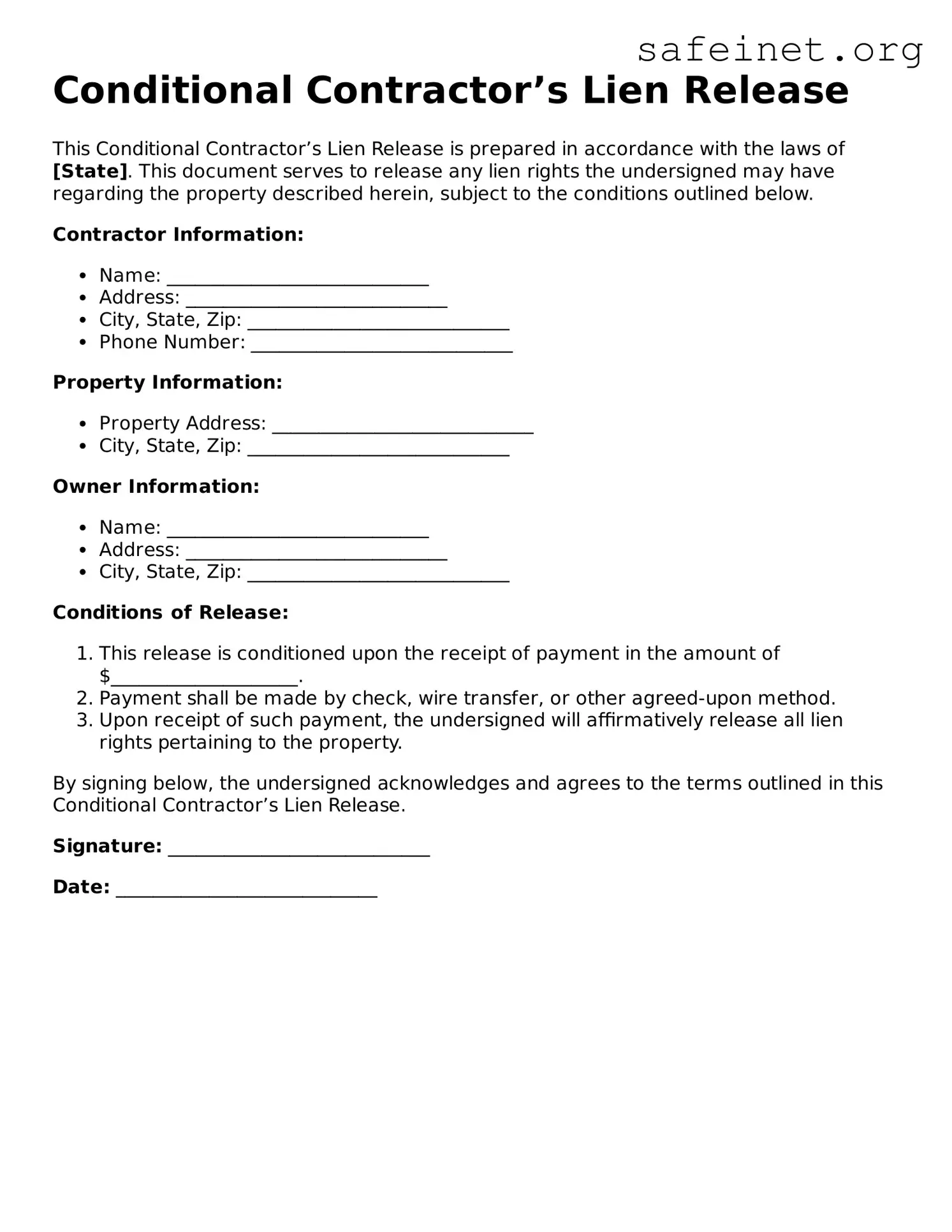What is a Conditional Contractor’s Lien Release form?
A Conditional Contractor’s Lien Release form is a document used by contractors to formally relinquish their right to place a lien on a property, provided they receive payment for work completed. This release serves as protection for property owners, assuring them that they will not face a lien claim if the contractor is paid as agreed.
When should I use a Conditional Contractor’s Lien Release form?
This form is typically used when a contractor has completed a stage of work on a construction project and is about to receive payment. By providing the release, the contractor secures the payment while also protecting the property owner's interests by ensuring there will be no future lien for that completed work.
What information is needed to complete the form?
To fill out the form, you will need details about the property, the contractor, the project, and the specifics of the payment. This may include the property address, the names of the parties involved, a description of the work done, and the amount to be paid for that work.
Is it mandatory for contractors to provide a Conditional Lien Release?
While it is not strictly mandatory, providing a Conditional Contractor’s Lien Release form is often a standard practice in the industry. It helps maintain good relationships between contractors and property owners and serves to clarify financial commitments.
What happens if the contractor does not get paid?
If a contractor provides a Conditional Contractor’s Lien Release and does not receive payment, they may still have the right to place a lien on the property for the unpaid amount. However, this can depend on state laws and the specifics laid out in the contract between the contractor and the property owner.
Can a Conditional Contractor’s Lien Release be revoked?
Once a release is executed and given, it cannot be revoked or undone unless both parties (the contractor and the property owner) agree to it. There may be limitations on the form's use based on the terms outlined within the original contract.
How does this form protect property owners?
The Conditional Contractor’s Lien Release form protects property owners by preventing contractors from filing a lien against their property for the work that has been paid for. It provides a clear record of payment and serves as reassurance that no future claims will be made concerning that specific work, as long as payment is made.
Can I use a standard template for this form?
While there are templates available, it is important to ensure that any template used complies with state laws and reflects the specific terms of your agreement. Customizing the form to your situation is often recommended to avoid potential issues.
What should be included in the confirmation of payment?
When completing the Conditional Contractor’s Lien Release, it is wise to include information such as the payment method, the amount paid, and the date of payment. Having this documentation helps reinforce the validity of the release and the financial transaction between the parties.
Where should I keep a copy of the Conditional Contractor’s Lien Release?
It is advisable for both the contractor and the property owner to keep copies of the completed Conditional Contractor’s Lien Release in a safe and organized manner. This ensures that both parties have access to the documentation if future disputes arise.
